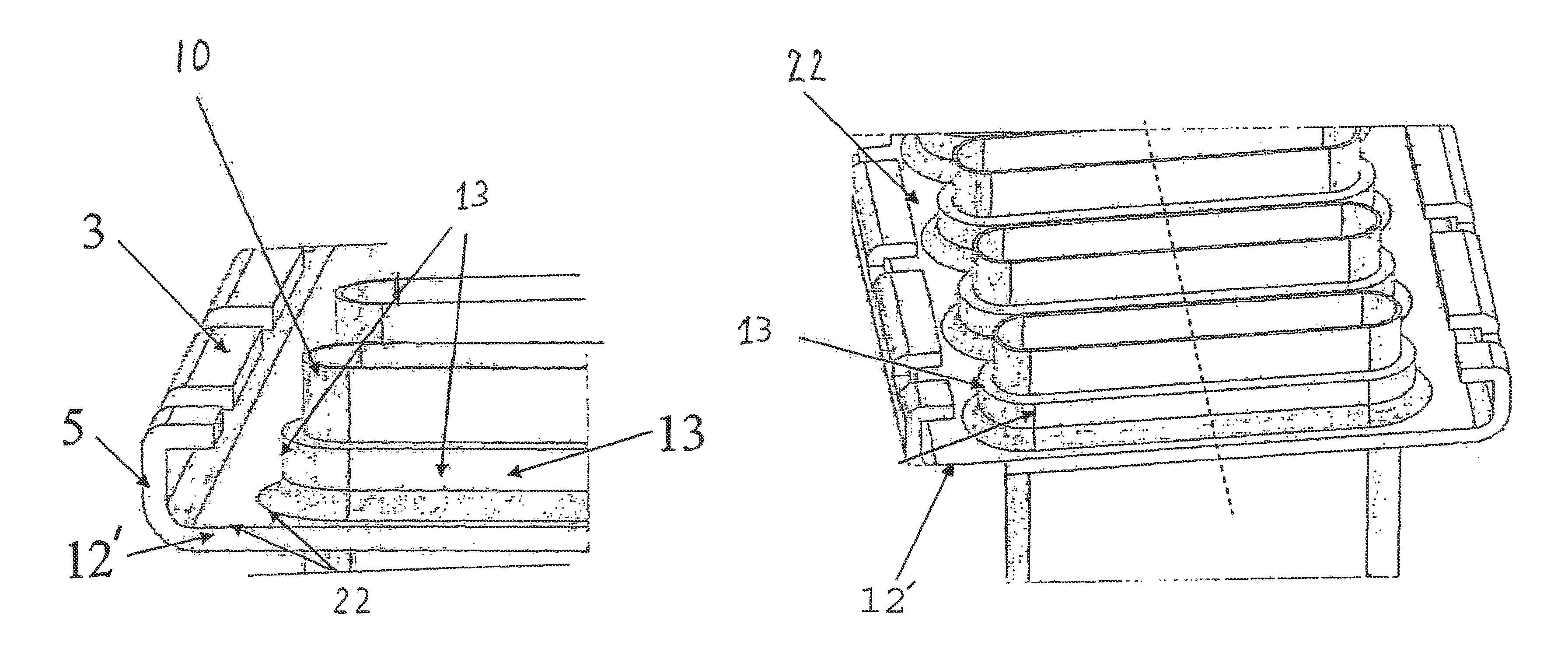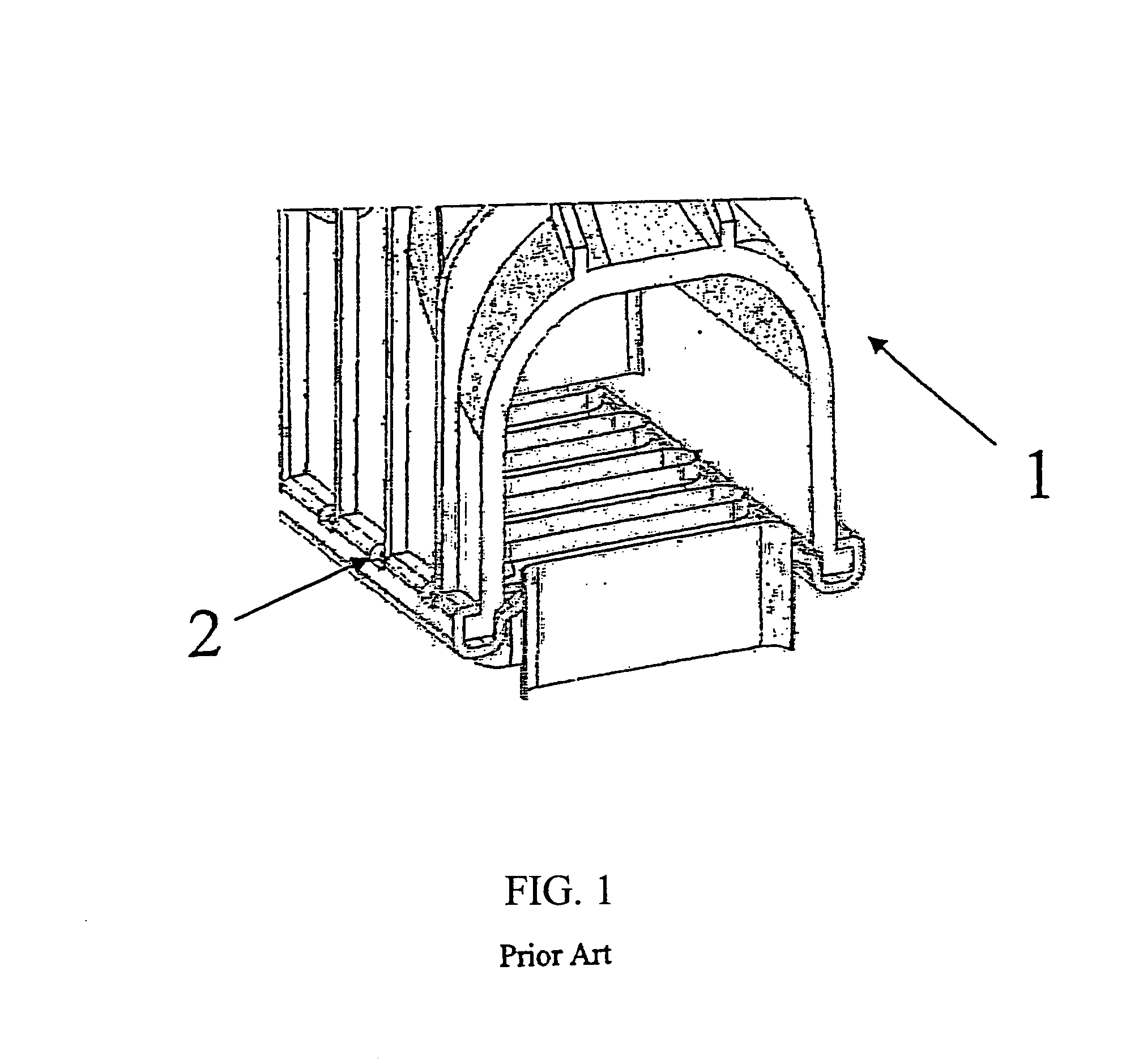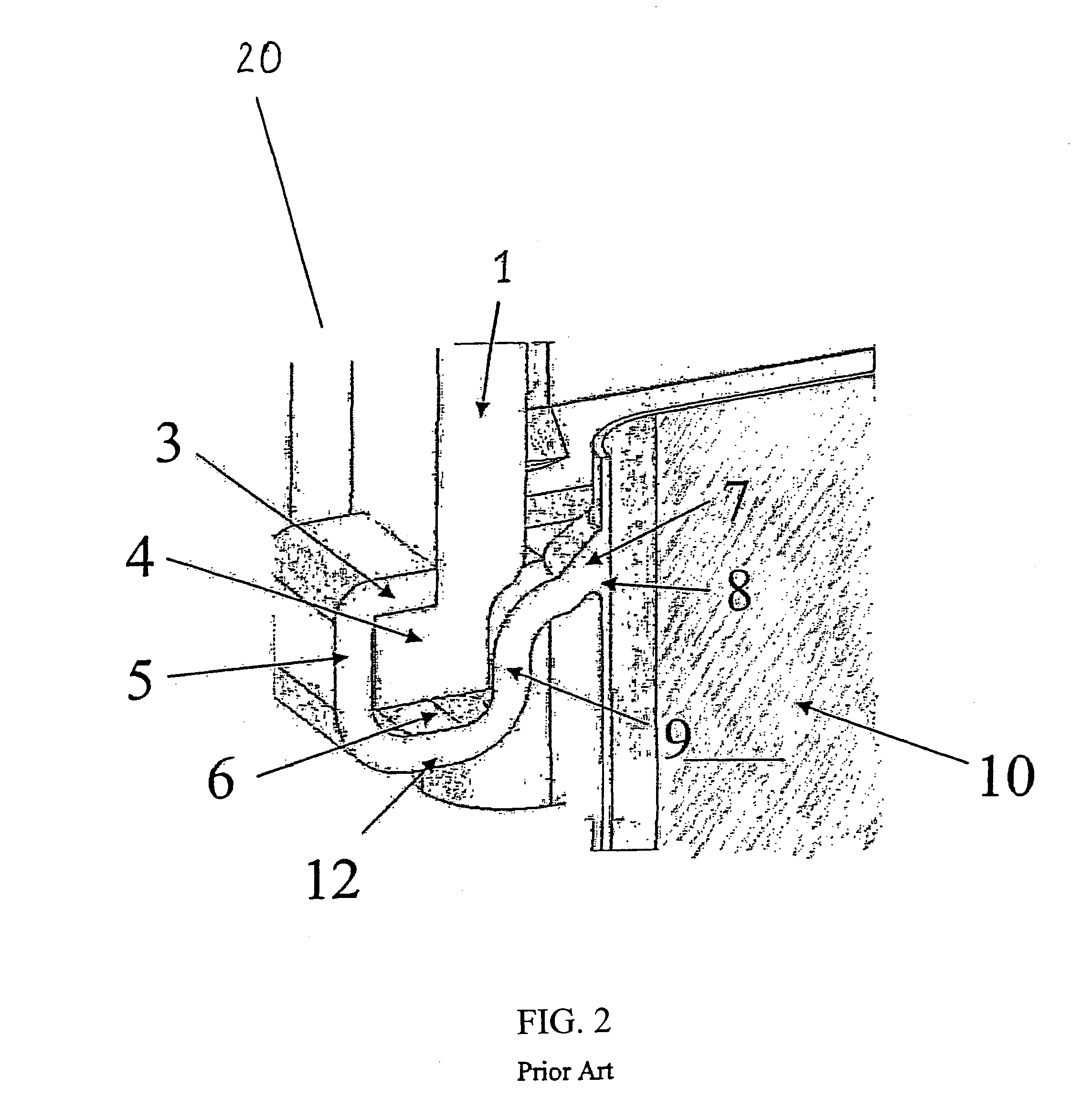Collar rib for heat exchanger header tanks
a heat exchanger and header technology, applied in the field of automotive heat exchangers, can solve the problems of increasing the deflection of the wall in such applications, reducing the stiffness and fatigue resistance of materials, and packaging problems in the vehicle, and achieve the effect of reducing the bending movemen
- Summary
- Abstract
- Description
- Claims
- Application Information
AI Technical Summary
Benefits of technology
Problems solved by technology
Method used
Image
Examples
Embodiment Construction
[0034]The present invention, in its preferred embodiments, overcomes many problems of the prior art. In preferred embodiments, the offset of the outer flange is decreased relative to the tube, thus reducing bending moments on the header due to internal pressure loads on the tank. In the preferred embodiments of the present invention, elimination the offset between the gasket sealing surface or gasket (lower) flange and the header plane eliminates a second bending moment, simplifies the header design, reduces material required, and maximizes ambient airflow to the core.
[0035]Elimination of the inner flange and utilization of the tube collar / ferrule ‘collar’ as a rib structure significantly stiffens the header. Linear FEA of preferred embodiments of the present invention indicates up to about a 40% reduction in stress compared to prior art designs examined. The collar also serves to prevent inward translation of the tank foot during crimping. This can improve durability and the header...
PUM
 Login to View More
Login to View More Abstract
Description
Claims
Application Information
 Login to View More
Login to View More - R&D
- Intellectual Property
- Life Sciences
- Materials
- Tech Scout
- Unparalleled Data Quality
- Higher Quality Content
- 60% Fewer Hallucinations
Browse by: Latest US Patents, China's latest patents, Technical Efficacy Thesaurus, Application Domain, Technology Topic, Popular Technical Reports.
© 2025 PatSnap. All rights reserved.Legal|Privacy policy|Modern Slavery Act Transparency Statement|Sitemap|About US| Contact US: help@patsnap.com



